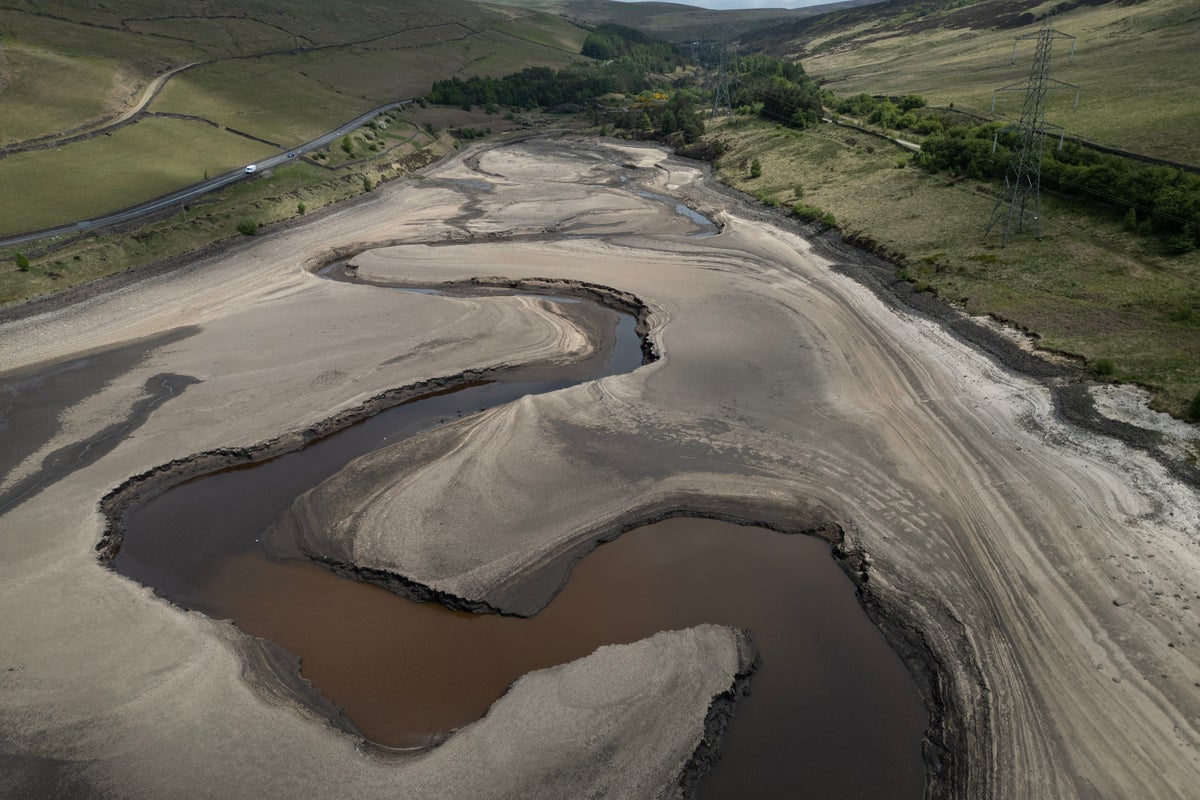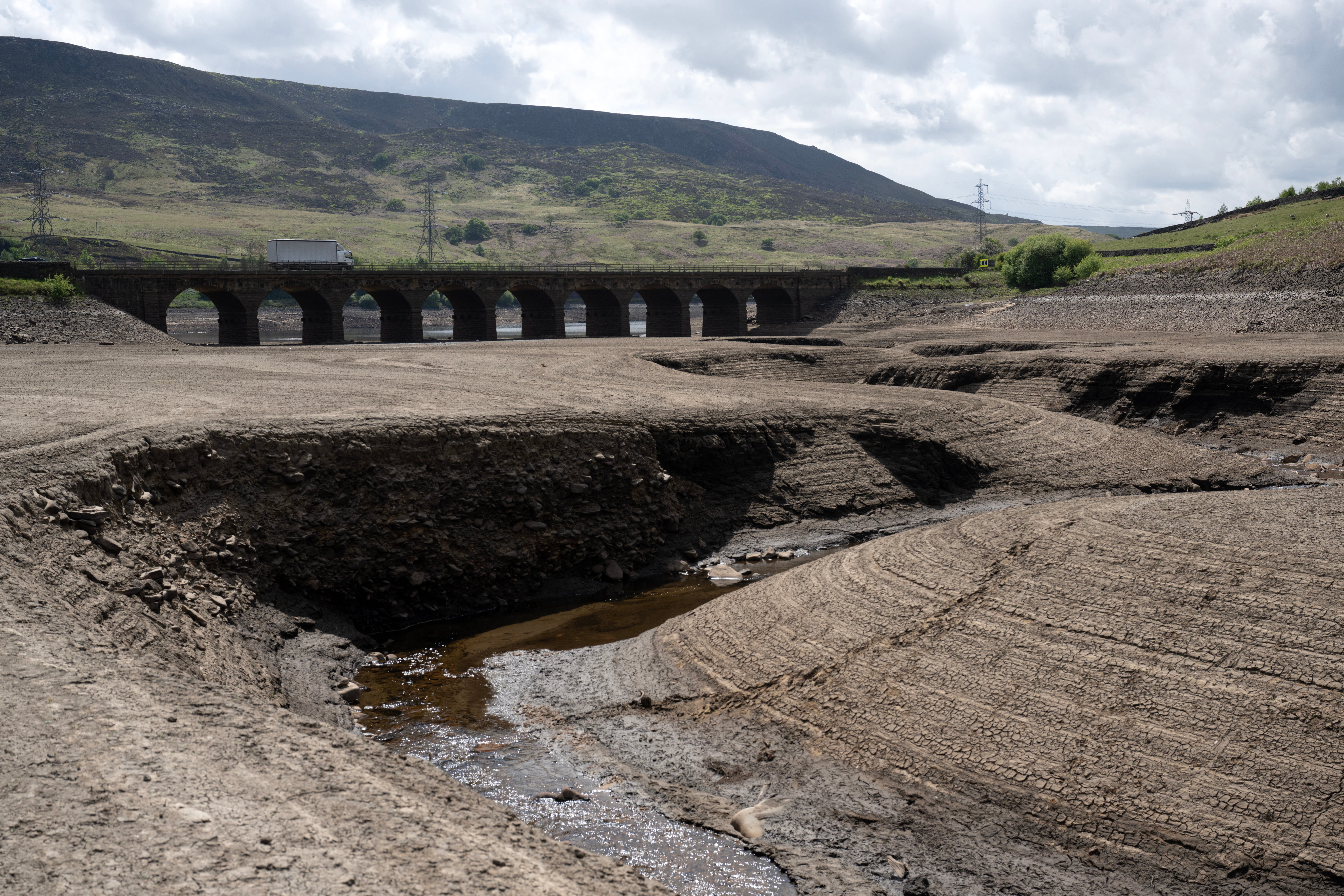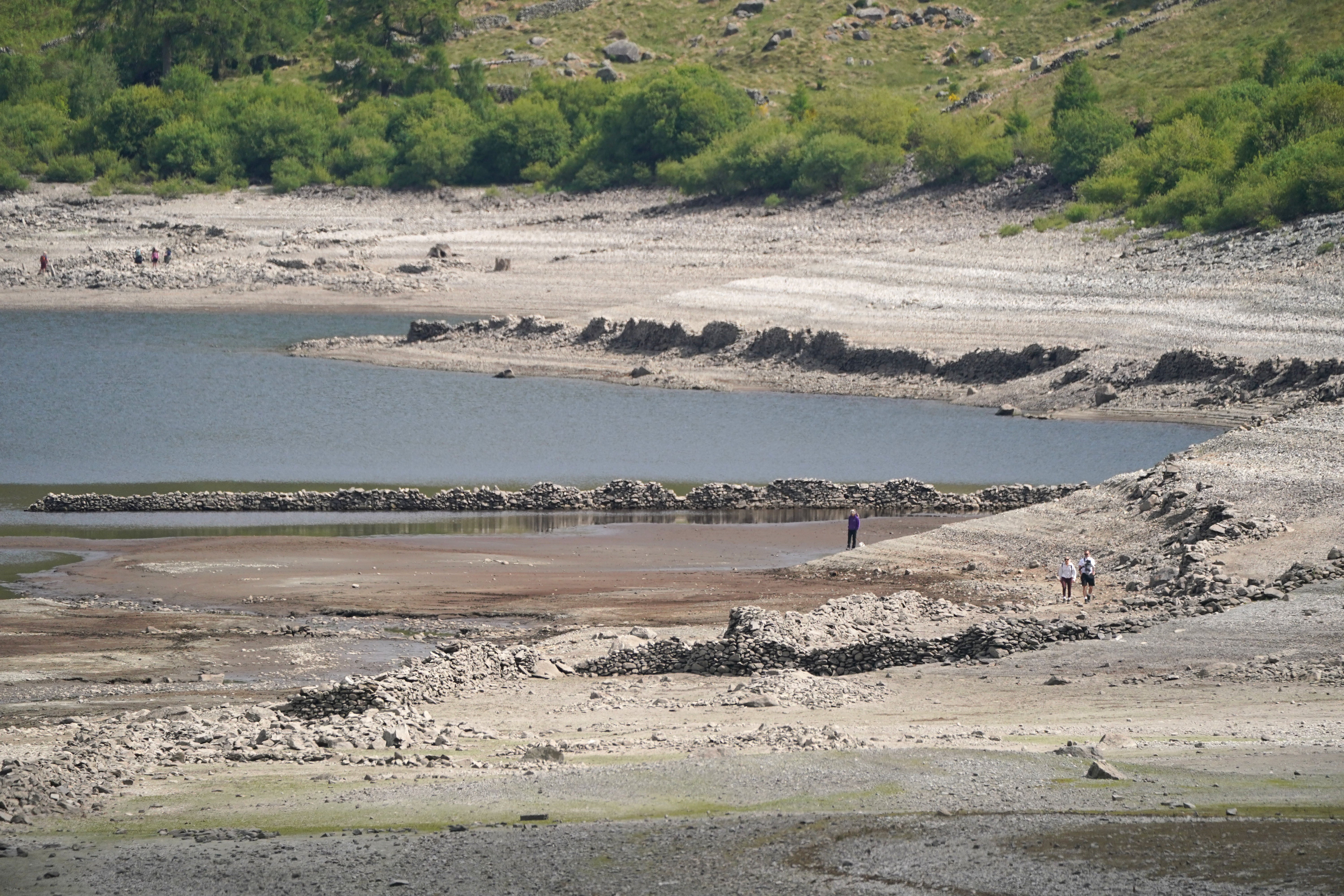
A drought has officially been declared in northwest England after the UK experienced record dry weather this spring, the Environment Agency has said.
The region entered drought status on 21 May, just days after residents were urged to use less water due to concerns over the low levels of rivers and reservoirs, which are currently at less than 60 per cent capacity across the region.
Earlier this month, prior to the recent bout of rainfall, the agency said northwest and northeast England had both seen their driest start to a calendar year since 1929, while England as a whole had endured its driest February to April period since 1956.

Simultaneously, the UK has experienced its sunniest spring since records began in 1910, with 630 hours of sunshine clocked up across the country between 1 March and 27 May – up from just 377 hours over the same three months last year.
This dry spell, with temperatures set to soar again this week, follows a period of extreme wet weather. England experienced its wettest 12 months on record between October 2023 and September 2024, leading to widespread flooding and agricultural disruption.
Experts warn that these volatile swings between extreme wet and dry periods are indicative of the growing impact of climate change.
England’s overall reservoir storage stood at 84 per cent at the end of April, lower than at this time of year in the drought summer of 2022.
Earlier this month, United Utilities said reservoir levels in northwest England were at just 69 per cent capacity, down from more than 90 per cent at the same point last year. The latest readings show this has since fallen to 58.9 per cent.

As a result, the water company urged residents in the region to use less water. Despite thanking customers for their efforts, United Utilities warned that reservoirs were still lower than expected.
Urging residents to continue doing “all they can to save and recycle water”, a spokesperson said: “We’re continuing to move water around our integrated network to get it to where it is needed, as well as bringing extra water into the system from other sources around the region.”
The company did not respond when asked how far the region could be from hosepipe restrictions, which form part of the company’s Level 2 drought plan.
An Environment Agency spokesperson said: “The northwest of England has entered drought status due to low water levels in reservoirs and rivers.
“No other areas in England are in drought, and we continue to monitor the situation closely.”
It also emerged on Wednesday that environment secretary Steve Reed had intervened to seize central government control over the planning of two major reservoir projects in East Anglia and Lincolnshire by designating them “nationally significant”, amid growing concerns over the UK's water supply.
Officials caution that without new reservoirs, population growth, ageing infrastructure, and climate change could cause drinking water demand to exceed supply by the mid-2030s. Water supply shortages are also impeding the construction of thousands of homes in areas like Cambridge.

Water companies across England have committed to bringing nine new reservoirs online by 2050, in Lincolnshire, Cambridgeshire, Oxfordshire, Somerset, Suffolk, Kent, East Sussex and the West Midlands and Somerset, with the potential to supply 670 million litres of extra water per day.
Additional reporting by PA







